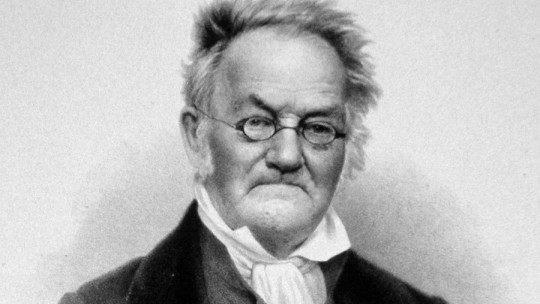
Living beings, both animals and plants, are open systems that obtain nutrients and gases from the environment and excrete waste substances into our environment on a continuous basis. What for us is feces, for other microorganisms and invertebrates are succulent substances that become part of their tissues (organic matter), thus allowing the continuation of the carbon cycle within the trophic chains of ecosystems.
Being an open system is necessary for survival: energy is neither created nor destroyed, it is only transformed (according to the law of conservation of energy) and, therefore, we must obtain it from the environment continuously. In any case, this also has several negative points, such as that we constantly dissipate heat in the environment, we depend on our environment for all our biological tasks and we can get sick and die as a direct consequence of what happens in our environment.
To bring some order to the ever-changing chaos that is the environment, Our bodies have a series of biological and/or physiological regulation mechanisms to maintain a stable internal condition, compensating for changes that may occur in the environment. Let’s see what they are like.
What is a regulation mechanism?
In biology, a mechanism is a system with parts that interact causally, giving rise to processes that have one or more effects on the environment, whether internal, external, or both One mechanism may be the process that leads to human sweat in a hot moment (physiology), but natural selection or genetic drift are also considered mechanisms, although in this case evolutionary in nature.
In the world of regulatory mechanisms, nothing is black or white, since Biological entities are extremely complex (multicomponent) beings, whose systems are in continuous interaction and feedback Beyond its diversity, three large levels can be distinguished in the underlying mechanisms of a living being:
All living beings have genetic mechanisms, since by definition, a cell must have a genome to self-replicate on future occasions (even if it is only one chromosome, as in bacteria). On the other hand, every living entity must present at least one cellular regulation mechanism, since the basic unit of life is the cell, even if it makes up the entire organism (as is the case of bacteria and archaea).
As you can imagine, The pinnacle of physiological regulatory mechanisms (glands and neurons, which are part of the endocrine and nervous systems, respectively) are restricted to the most evolutionarily complex animals as we are vertebrates, although other living beings also have their own nervous and endocrine scales.
At this point, it should be noted that regulatory circuits can present two feedback systems: positive and negative. We briefly explain what they consist of in the following lines.
1. Negative feedback
On this occasion, The regulation mechanism seeks to keep a parameter X under control in a very specific spectrum, always close to the value X0, which represents the maximum optimum in a specific environment. The values of the parameter
2. Positive feedback
In this case, things change. The goal of positive feedback regulation mechanisms is reach the maximum point of effectiveness of parameter X, deviating from the value X0, once certain conditions have been reached
Although we are dealing with quite complex concepts, the difference between negative feedback and positive feedback is very easy to understand: in the first case, the system responds in a direction opposite to the signal, that is, it tends to “stabilize” the output. of the system so that it remains in constant conditions. On the other hand, in positive feedback the effects or outputs of a system cause cumulative effects upon the input. In the latter case, it is a system that, by definition, has an unstable equilibrium point.
Examples of regulatory mechanisms
We have moved between quite ethereal concepts, so it will be good to exemplify a little what a regulation mechanism is from a physiological point of view. Let’s say, for example, that we want to understand how sweating occurs in humans. Go for it.
First of all, it should be noted that Sweating is a regulatory mechanism modulated by the sympathetic nervous system, which is responsible for many involuntary functions in humans Our hypothalamus contains neurons in the anterior and preoptic area specialized in recording changes in internal temperature and in the activity of the cerebral cortex. Therefore, when information arrives that there is excess heat (whether internal or external), the hypothalamus sends the signal through cholinergic fibers to the eccrine glands distributed throughout the skin so that they excrete sweat.
Sweat comes out into the environment through the pores that connect the eccrine glands with the skin. Since fluids need heat to evaporate (after all, heat is energy), they “catch” this excess body surface temperature, which causes our overall system to cool down. Through the evaporation of sweat, 27% of body heat is dissipated, so it is not surprising that this mechanism is activated in the event of any physical and/or environmental variation
In this case, at a theoretical level we are dealing with a negative feedback regulation mechanism. The organism’s interest is to maintain the body temperature (parameter X) in a suitable range as close as possible to the ideal, which is between 36 and 37 degrees. In this system, the functional complex responds inversely to the external stimulus.
If we get philosophical, We can also conceive of natural selection itself or genetic drift as regulatory mechanisms from an evolutionary point of view. Natural selection exerts pressures on the open system that is a population, selecting the most beneficial genes in the long term and discarding the least adaptive ones.
For example, an animal of a bird species that is born (due to a de novo mutation) with a larger beak than the rest, could have an easier time hunting insects between the barks of trees. As this living being has an advantage over the rest, it will be able to feed more, it will grow more and, therefore, it will be stronger when it comes to competing with the rest of the males to reproduce. If the “large beak” trait is heritable, it would be expected that the offspring of said animal would be more viable than the rest.
Thus, over the generations, the “large beak” trait would increase in the population, since those who have it simply live longer and have more opportunities to reproduce. Natural selection acts as a clear mechanism of evolutionary regulation in this case, since the proportion of genes in a population varies according to the impositions of the environment.
Summary
As you may have seen, regulatory mechanisms in the world of biology go far beyond thermoregulation or energy consumption. From the expression of genes to the evolution of species, everything can be summarized in positive or negative feedback that seeks to reach a maximum point of effectiveness, at one point or another. In the end, the goal is to achieve maximum internal balance in every possible sense, always taking into account environmental impositions.








